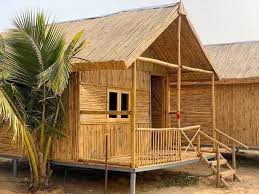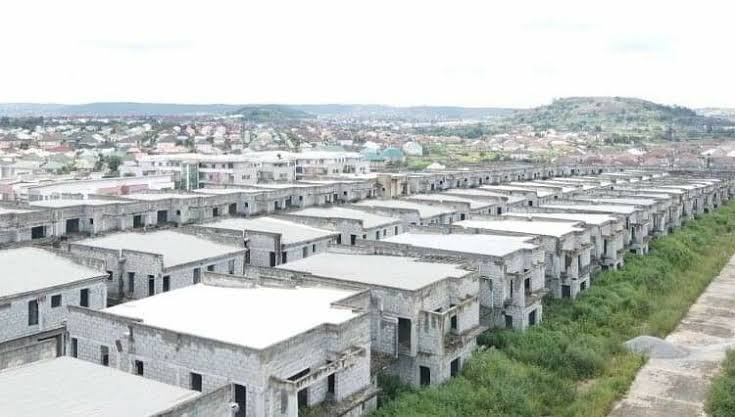By: Tijani Salako
No doubt the extent at which housing materials and other ingredient are skyrocketing is alarming. Many Nigerians in the reality of this current economic reform by the government now know what it takes to purchase housing materials. However, purchasing is not the major challenge; the affordability of the pricing of these materials is a significant factor to consider.
Cement is currently at the verge of pocket stripping, not to mention a ton of granite, sharp and soft sand, water accessibility, roofing sheets, nails, wood, planks, iron rod and other materials. These costs are prohibitive when considering housing project construction.
To have an affordable housing, many are of the opinion that, the architect should bear a larger part of the onus. Since a mansion is built with pencil on paper, it is assumed that the design of an architect is very crucial in determining whether the project will be cost-effective or not as it will form the basis of estimation and valuation of the housing construction.
The largest agency of government in building research and innovation – the Nigerian Building and Road Research Institute (NBRRI) under the Federal Ministry of Innovation Science and Technology, has embarked on solving the diverse need for housing sector using green technologies – including bamboo plants in erecting a smart house. Interestingly, the adoption of technologies is not surprising to the built industry, currently many offices are being built with containers, fully furnished with smart materials, like; Plaster of Paris, Screeding, Air conditional, Tiles, Moldings and trim among others.
The NBRRI is known to have done a lot of work on cheaper, and more eco-friendly materials, including the use of bamboo, unarguably, Nigerians, particularly in rural area, have successfully deployed alternative and less costly materials in housing construction, erasing any form of doubt about their durability. However, in a more recent workshop which was held by the NBRRI in Abuja, with the theme centered on “Relevance of Bamboo for Climate-smart hosing construction: Integrating NBRRI Technologies in Reducing Carbon Footprint.”
The Permanent Secretary of Ministry of Innovation, Science and Technology, Esuabana Nko Asanye, represented by the Director of Environmental Science Technology, Bernedette Oguche, noted that “adopting bamboo plants for smart houses would promote environmental sustainability, ensure that the construction process aligns with principle of adaptability, comfort and affordability for both low and middle-income earners in the country. The cement-centric building has failed to serve the interest of the mass housing sector and stifling of meaningful innovation, particularly in those traditional, time-tested alternatives, we can not but welcome the idea
The question is then, considering the high cost of housing ingredients, can alternative housing using bamboo pave the way for the housing deficit in Nigeria? Many housing alternatives are being deployed with houses built with woods, and containers, will bamboo housing be prone to threats like collapse, fire-outbreak among others.
Illustrations within Nigeria and outside Nigeria demonstrate the potential of smart house construction that are eco-friendly and highly sustainable in nature. Most of these projects utilize more cost-effective hybrids in housing delivery, unlike the traditional cement-centric approach. Government initiatives are aim to ameliorate the gaps in the housing industry and solve problems especially in accommodation unites, to cushion the deficit for Nigerians.
However, a real estate expert, Olufemi Oyedele, warned that the idea of bamboo being an alternative for cement may not work if it is not well researched. He said “Bamboo cannot be completely used as a walling material, but as a roof structure member, floor tiles and ceiling materials after processing. Bamboo house goes against the psychology of housing. “It will not be popular due to ‘stigma’ because of short lifespan compared to sandcrete and mud brick walls. Bamboo reacts in water and Nigeria, being a tropical country, cannot use it.
“China has about five different bamboo research and development centres. There is one in Zhejiang Province, founded in 1984 by the China Forestry Ministry and the Province of Zhejiang. When we had our bamboo technology training in the International Centre for Bamboo and Rattan at Chaoyang, Beijing, China, in 2016, the building where we had our training was completely built of bamboo. The wall, floor, doors, windows, ceilings and furniture, and furnishings were made of processed, treated and finished bamboo. But they are expensive! They are also the result of long years of research. “Subsequently, bamboo houses as affordable housing is not sustainable. At best, they are used as demonstration and temporary accommodation,” he said.
Then, the problem has never been a lack of workable ideas but the absence of a framework to deliver on them. It’s interesting that the bamboo idea is coming from the innovation, science and technology ministry rather than the housing development ministry. Critically, it should be noted that the issue of integration lies in the domain of states agricultural ministries, ensure steady supply of bamboo trees,
For the NBRRI it’s essential to transition for being a merely an idea bank to an active player in the housing sector. Stakeholders in the housing sector should explore ways to drive the idea to a limelight, paving the ways for addressing the housing deficit in Nigeria. Failure to evolve appropriate standard in local technologies that guarantee safety will be long term-challenge.
Tackling these issues are germane as it requires hard work of research, cross-ventilation of ideas that will give assurance of sustainability. The ministry and the NBRRI should explore alternative with housing ministry on the ongoing Renewed Hope Cities and Estate Scheme and key into partnership with public-private initiatives to deliver hundreds of thousand of affordable, decent housing across the federation.












